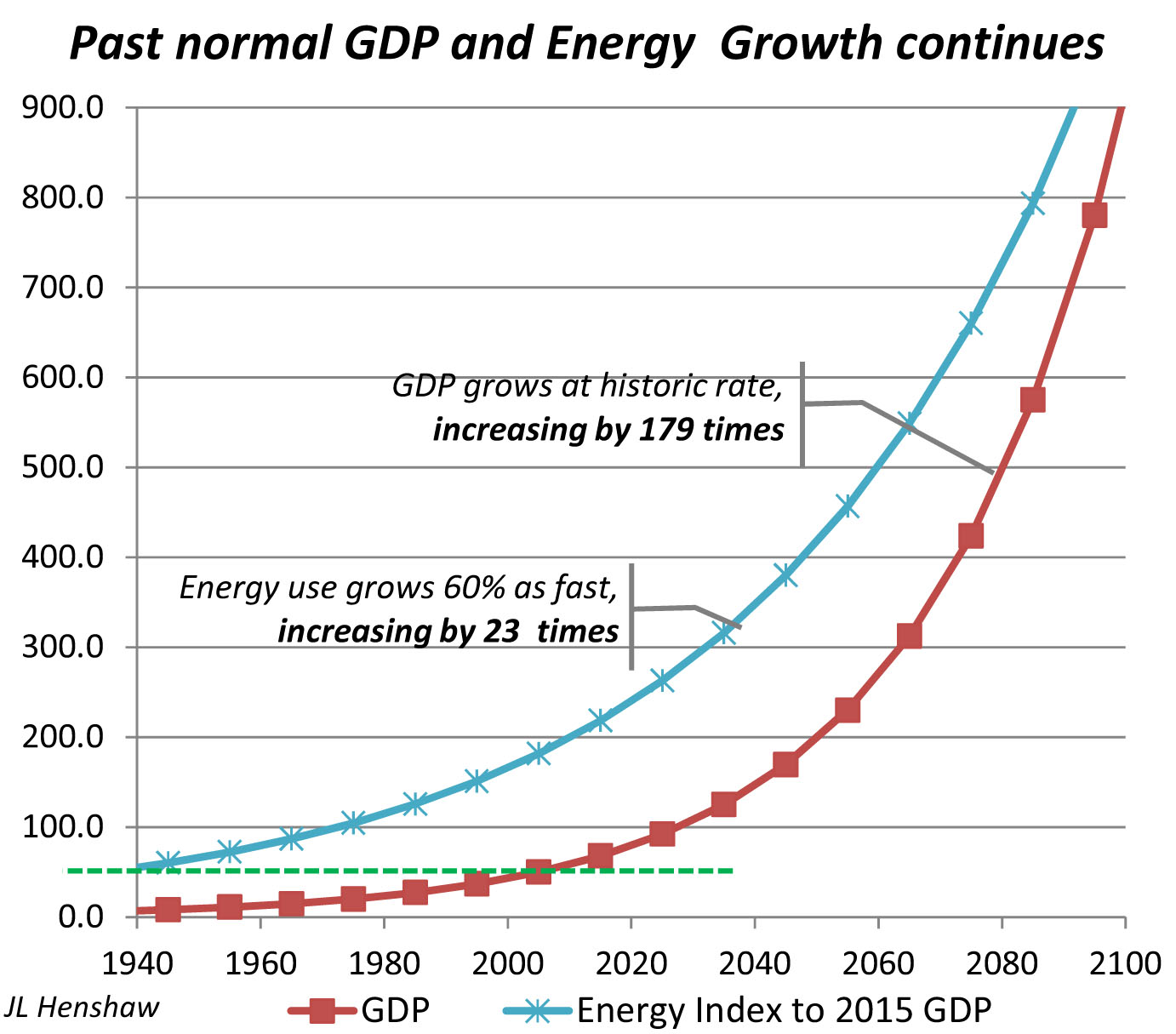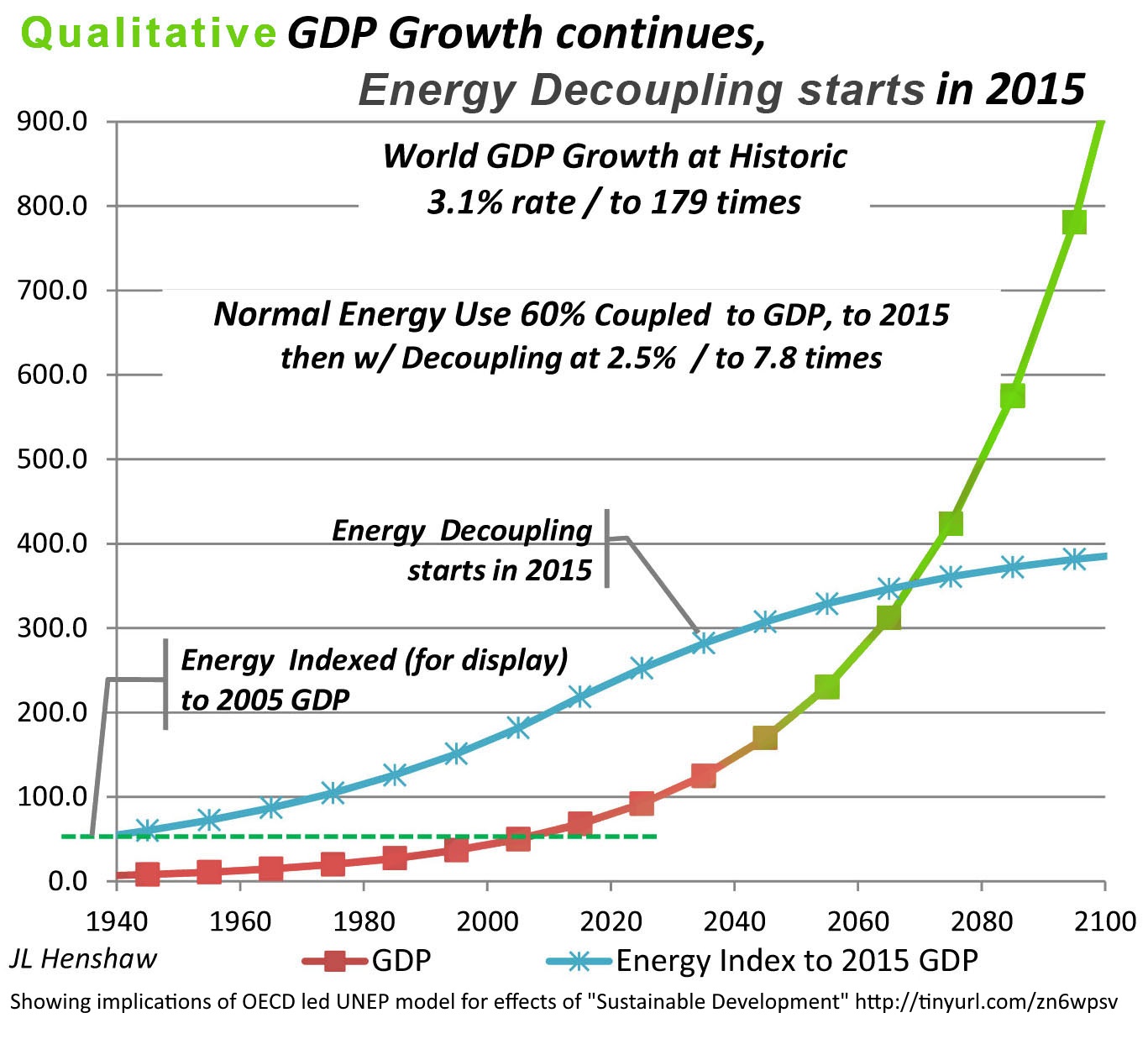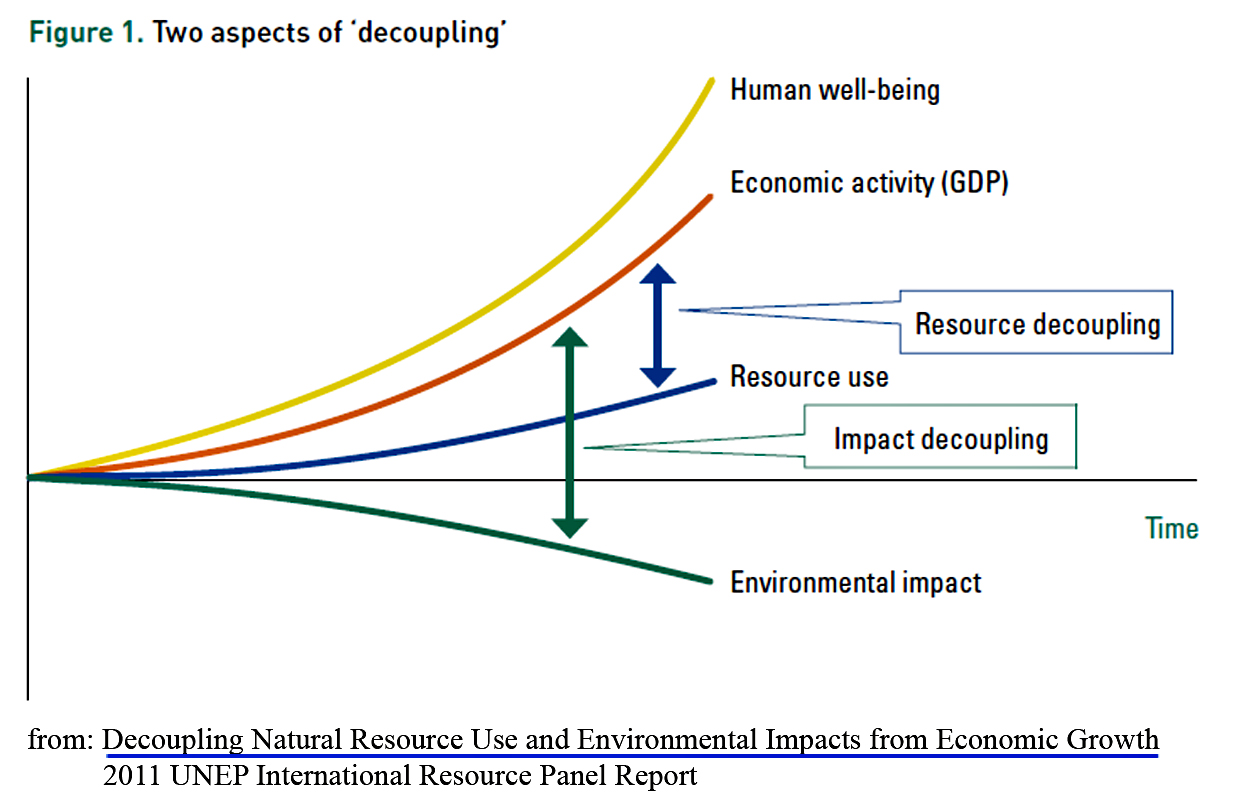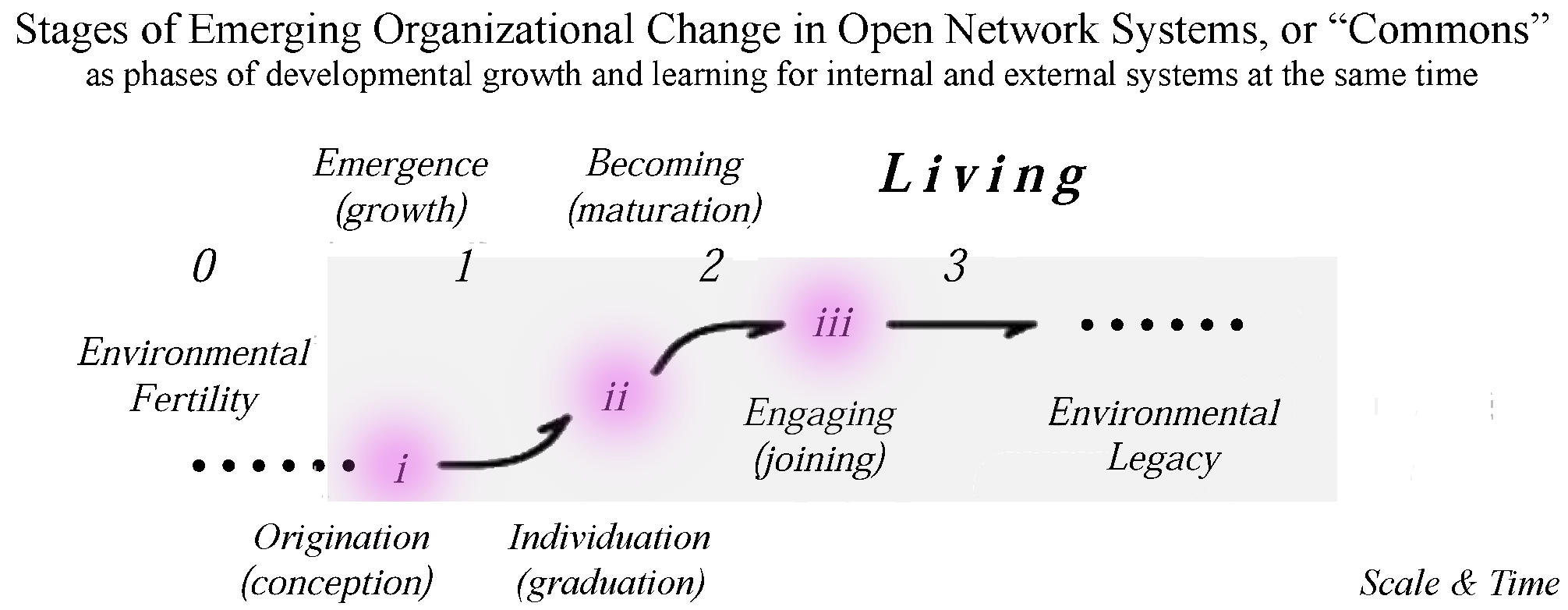Preface remarks
- This exploration of a pivotal world issue, on which the success or grand failure of our present global development strategy rests… is an example of the wide range of penetrating treatments of important topics covered in the Research Journal “Reading Nature’s Signals“. It document’s Jessie Henshaw’s current application of the the natural systems identification and organizational exploration methods that originated with a discovery in the 1970’s of how transitions in the continuity of natural processes expose the design of the systems and how they are changing, introduced in: The Physics of Continuity = ladders of change
- For more substantiation of this scientific view of how the economy and earth are connected see:
– a Whole Systems view – Piketty’s “r > g”
– A World View of Off-Shore Energy use - For a study of decoupling trends and fluctuation for 1971 to 2017 see
– Evidence of decoupling still zero.
__________
Introduction:
We have a responsibility to use both the words of science and also the methods, when choosing methods of “Sustainable Development” to rely on for our effort to save the earth. It’s often not easy to do. Ask any scientist. It’s often as hard as sitting down to write a great poem, a different kind of creativity but just as demanding. This article discusses the correct scientific method for defining measures of “decoupling” our growing economy from its growing impacts on the earth.
That’s the part of the “Decoupling Puzzle” I can actually answer, offering a way to scientifically define an SDG for Post 2015 “economic decoupling”, and the measure of compliance. See also to the PDF file and XLS file to see the details of the model. It’s a bit different from the approach shown in the UNEP report on decoupling . What I define is an evidence based scientific measure of a growth economy departing form its reliance on growing resource use. It could be used in regulating the economy’s approach of our best understanding of the natural limits of sustainable development:
“A world Decoupling Rate that would assure, within planetary boundaries,
adequate development space and “carrying capacity” to fulfill the intent of the SDG’s.”
How to transform the economy to create growing wealth without growing resource use is left to the reader or other discussions, though I give a hint to what that “entirely new kind of wealth” might be at the end.
We start with the historic records that display the past “growth constants“ of the world economy. Figure 1. shows GDP, Energy use, CO2 and the GDP energy efficiency of the economy all growing together, with growth rates that are in constant relation to one another. That is the “coupling” of GDP and resource use that needs to be “decoupled”.
That evident constant growth rates and their proportionality (i.e. the “coupling”) is called “natural” because throughout history people have noticed it, tried to explain it, and also tried to change it, all to no avail. This coupling of these measures of the whole economy has continued as if measures of a growing person’s “height and weight”, growing at different rates, but still growing together. It has seemed to be just how the economy works.
As a systems ecologist, myself, I see them as displaying humanity’s natural rate of whole system learning, limited by coordinating all parts of human innovation and development efforts, while struggling to expand at the fastest accelerating rate possible. Systems ecology, then, does not consider economic growth as a “monetary progression” but as an “organizational progression”, a process of “whole society” building on its past to create a new future. This historical record is “how we’ve been doing it” so far, and now that we’ve found it unsustainable we need to change to something different.
…”growth” is a process of our learning how to coordinate doing what we want.

To measure a departure from that we start with the “Economic Growth Constants”:
GDP (3.13 %/yr), Energy use (1.89 %/yr), and Energy Efficiency (1.24 %/yr) . The linkage between the GDP and Energy curves, is the “Energy Coupling Rate” (60.4 %/yr the ratio 1.89/3.13), how fast energy use grows relative to wealth.
The idea and fallacy of “Decoupling”
is to weaken that linkage between earth and economy to zero, changing what has long been a constant coupling rate of 60% by successive reductions to 0.0%, just by continuing to dramatically improve the efficiency of resources use as before. Many people believe new technologies should revolutionize development to do that, other’s think innovation will create products people prefer that just don’t consume energy to produce or to use. What both would agree is that 60% needs to decline toward 0.0%
We could define that transition as a “Decoupling Rate”, the rate at which the Coupling Constant of the past declines toward ‘0.0’. That would allow continued growth in wealth without adding to what we now see are globally unsustainable scales of energy use impacts on the earth. Defined for energy use alone would serve to define it not just for the impacts of fuel extraction and consumption, but also ALL the impacts of a material kind we cause by using the energy we extract for creating economic products.
So.. that would be generally inclusive of all economic impacts
that needed energy to be produced.
Here’s what happens if the Coupling Rate remains constant, as we step into the Post 2015 world “Sustainable Development Goals”. By the end of the century we’d have multiplied our energy impacts on the earth 23 times. Without counting the costs of those impacts the compensation is increasing the wealth of the economy 179 times.

Below is what happens with a constant Decoupling Rate, perhaps declining by 2.5%/yr from: 60.4 %, to 47%, 36%, 28%, 22%, 17%, 13%, 10% … The curve “Looks” like a natural growth curve, giving some hope that there’s a real way to do it, and it’s only left to pushing our minds to understand how nature does things to achive it for ourselves, as we’ve always done.

The model and references can be found in either the PDF file Decoupling Rate Model 2.pdf or the XLSX file Decoupling Rate Model 2.xls.
a goal for decoupling and measure of compliance is a decoupling rate
To set the goal you’s start with a guess you think is feasible, and then test it against how other things need to work with it. Once you discover what rate is truly necessary and possibly achievable it becomes like a “new planetary boundary” for all combined economic development. You then use what will fit within that limit to qualify the plans people are making, and monitor success by following the economic statistics to see if the ratio of energy to GDP growth is declining.
Decoupling is already the apparent consensus of the world sustainability community, as both a necessity for preserving the earth as it is, and for achieving the sustainable development goals (SDG’s) being extensively discussed in the multi-faceted Open Working Group on Sustainable Development. The UN’s (long) 2011 UNEP summary report on Decoupling includes the following figure, showing their slightly different concept.

This graph displaying the effect has the same features I’ve been following in the history of OECD consideration of “Decoupling” to permit both continued economic growth and sustainability since they started applying economic definitions to the Brundtland Report . You should look close, as the discrepancy appears to be that the “Environmental Impact” is shown as exponentially declining. The reason is that the relatively slower increase in resources uses, while still growing exponentially is slower than the growth of GDP, so *the hypothetical impacts avoided* is what is shown as an ever accelerating decline.
This approach does not actually show a change in the rate of GDP environmental coupling is the upshot. It then also does not really show a measurable “de-coupling”, but ever growing impacts with growing efficiency as has been a constant of the economy from the beginning of growth. To some that’s just a matter of terminology, but seemingly misleading enough to get the OECD and UN to project ever growing resource use and impacts as also an ever growing decline….
jlh
___________
p.s.
– A Hint to the real issue here –
(on seeing the same principles working for global issues and on a more human scale too)
I have a lot of readers of my journal, but I hardly ever find out how anyone is affected. So it seems lots of readers drawn by the material, but may either be unaffected or wouldn’t quite know what to say.
For example, I wonder if anyone notices, the actual story here is about “the other curve”, the GDP curve not the energy use curve, the one I don’t mention, the “taboo” subject”, the “elephant in the room”. You might well ask why everyone seems to keep saying we still really must keep getting richer and richer all the time. You would think, as humanity approaches its natural maximum physical size and limits for our burden on the earth, we’d be asking how to get more out of limited wealth instead of only about how to keep; it “growing”.
One reason is of course “the money”. The creativity of our whole economy is organized around measuring our innovation and success in growing our wealth with it. Wealth that multiplies is the great life attraction for nearly all our cultural and business leaders, the key to our retirement security, the holy grail of government services… Success is using the money we have so it multiplies our wealth, recognition and approval.
In the past economic growth was also invariably “coupled” with ever growing consumption of energy and other resources. So… its not that anyone quite knows how to continue it, our being blessed with centering our lives on this gift from nature as our way of life, but that we don’t know how not to. At the moment our world doesn’t seem it could possibly work any other way, so it just has to continue.
So… it strongly appears that our civilization as a whole is heading into an experience o *truly* beyond categories for us. While we make our plans, we only see “something coming” and don’t really know what it is or what to do. Almost all real transformations in nature and all real transformations in our own experience also seem to be about. To me the curiosity is that we’re not not studying the numerous natural transformations of roughly similar kinds. It would only give us hints about what’s ahead, but I think it might be where to find better than usual ones.
Our own great “coming of age” transformations occur toward the end of our own personal physical growth, and that generally is also when life starts getting really interesting, and the beginning our own longest period “expanding horizons” too. It’s when people tell you “the best is yet to come”, and we find the boundaries of our own experience opening up in ways we could just never have imagined.
In great transformations what is predictable is inevitable “decoupling” from the life that prepared you for it… What is called for to have it be successful isn’t predetermined, though, except that it’s the search nature prepared you for that is all you have for finding the new partners and the expanded “living” to follow. Great transformations seem always to involve changing organization in both internal and external relationships at the same time, occurring somewhat in response to each other, each creating a new beginning and passing along deeper messages in the chain of growth phases of the natural cycle.

So, in practical terms… we will need a different kind of innovation, to stop growing and keep growing at the same time. Nature has made our “decoupling” completely unavoidable, but finding our new path to widening horizons is something we need to invent. An elemental kind of a “map” like this, for how it goes, should definitely not be taken as all it will be! ;-)
___________
